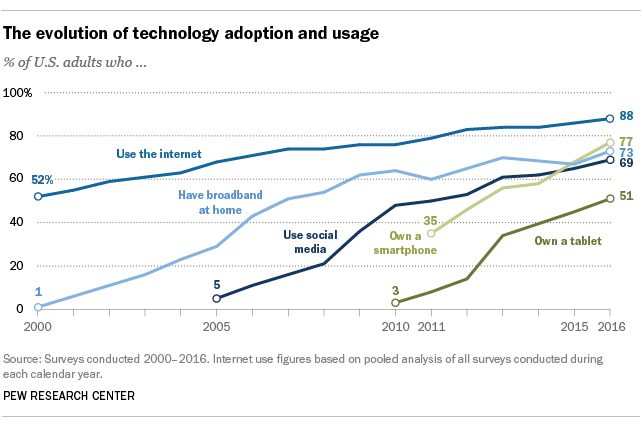Google AdWords Is Becoming Google Ads
Google has revealed that their complex lineup of ad products is getting re-branded. AdWords launched 18 years ago with the goal of easing the process of connecting online with businesses. The most significant change since then has been the increasing use and incorporation of the mobile internet into our everyday lives. With several changes in the space came with increased complexity; therefore Google decided to simplify brands and solutions for their advertising products. The main changes Google is making with their current platforms is combining all different advertising channels to make the lives of digital marketers much easier. The three brands AdWords is breaking down into are: Google Ads, Google Marketing Platform, and Google Ad Manager.

Google Ads
Google Ads will be the front door for advertisers to buy on all Google surfaces. It represents the full range of advertising capabilities that Google currently offers. In this space, Google is also creating a campaign type called Smart Campaigns. Designed specifically for small business advertisers, Smart Campaigns will allow for ease into first-time online advertising. The purpose is to identify actions that are priorities to these businesses whether that be phone calls, purchases, or store visits. After recognizing these prioritized actions, Google Ads will then use machine learning to optimize ad copy and targeting to drive more of those actions.
Google Marketing Platform
Google will combine DoubleClick Digital Marketing and Google Analytics 360 into one single brand: Google Marketing Platform. The main reason for the conjunction of platforms is because feedback has told Google that there are several advantages to using ads and the technology of analytics together. According to Google’s official blog, their goal is to have this platform be a place where marketers can plan, buy, measure and optimize digital media and customer experiences in one place. In addition to uniting DoubleClick and Analytics 360, Google is also announcing a new platform called Display & Video 360. This will combine features from DoubleClick Bid Manager, Campaign Manager, Studio and Audience Center. Display & Video 360 will also enable marketing and media teams collaboration abilities in a single space.

Tech Crunch shares a quote from the Managing Director for Platforms, Dan Taylor:
“The Google Marketing Platform is responding to a growing need for collaboration. For example, Adidas used the platform to bring its brand and performance marketing teams together with the measurement team.”
Google Ad Manager
Google Ad Manager will combine Google’s monetization tools such as DoubleClick Ad Exchange and DoubleClick for Publishers. This has been a 3-year merging process, and over this time Google has been working to unify this platform. The benefit of this will be publishers being able to manage business directly and efficiently. AdSense and Admob brands are expected to continue with no consolidation.

Jonathan Bellack, Google’s director of product management for publisher platforms, says the following about the Google Ad Manager Platform:
“These categories have just been breaking down for a while — all of our publishers already log into one user interface. So the only thing that’s really changing is the logo.”
More From Onimod Global
For more information regarding digital marketing expertise, trends and insights, visit the Onimod Global Website. We provide weekly news updates on the latest in the world of digital marketing. Enjoy!



